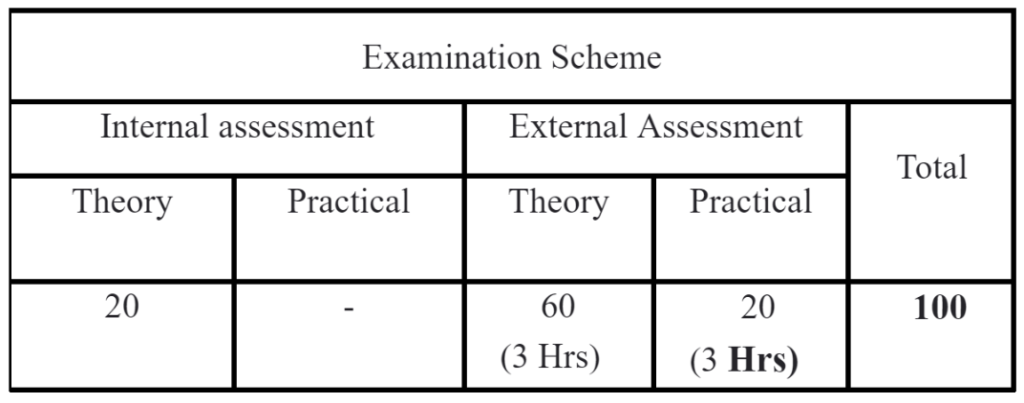Course Title: Web Technology (3 Cr.)
Course Code: CACS205
Year/Semester: II/III
Class Load: 6 Hrs. / Week (Theory: 3 Hrs. Practical: 3 Hrs.)
Course Description
This course covers different aspects of web technology such as HTML, CSS, issues of web technology, client tier, server tier and advanced server side issues.
Course Objectives
The general objectives of this course are to provide fundamental concepts of Internet, Web Technology and Web Programming.
Course Contents
Unit 1 HTML and CSS [15 Hrs.]
HTML Basic: HTML Tag Reference, Global Attributes, Document, Structure Tags, Formatting Tags, Text Level Formatting, Block Level Formatting, List Tags, Hyperlink Tags, Executable Content Tags.
Image & Imagemaps: Introduction, Client-Side Image Maps, Server-Side Imagemaps, Using Server-Side and Client-Side Image Maps Together, Alternative Text for Image Maps.
Tables: Introduction To HTML Tables and Their Structure, The Table Tags, Alignment, Aligning Entire Table, Alignment within a Row, Alignment within a Cell, Attributes, Content Summary, Background Color, Adding a Caption, Setting the Width, Adding a Border, Spacing Within a Cell, Spacing between the Cells, Spanning Multiple Rows or Columns, Elements that can be Placed in a Table, Table Sections and Column Properties, Tables as a Design Tool.
Frames: Introduction to Frames, Applications, Frames document, The <FRAMESET> tag, Nesting <FRAMESET> tag, Placing content in frames with the <FRAME>Tag, Targeting named Frames, Creating Floating Frames, Using Hidden Frames.
Forms: Creating Forms, The <FORM> tag, Named Input fields, The <INPUT’> tag, Multiple lines text windows, Drop Down and List Boxes, Hidden, Text, Text Area, Password, File Upload, Button, Submit, Reset, Radio, Checkbox, Select, Option, Forms and Scripting, Action Buttons, Labeling input files, Grouping related fields, Disabled and read-only fields, Form field event handlers, Passing form data.
Style Sheets: Definition, Importance, Different Approaches to Style Sheets, Using Multiple Approaches, Linkingilto Style Information in Separate File. Setting up Style Information, Using the <LINK>Tag, Embedded Style Information, Using <STYLE>Tag, Inline Style Information.
Unit 2 Issue of Web Technology [3 Hrs.]
Architectural Issues of Web Layer, Tier Technology: 2-Tier, 3-Tier and n-Tier.
Unit 3 The Client Tier [10 Hrs.]
Representing Content; Introduction to XML; Elements and Attributes; Rules for Writing XML; Namespaces; Schema: Simple Types and Complex Types, XSD Attributes, Default and Fixed Values, Facets, Use of Patterns, Order Indicators(All, Choice, Sequences), Occurrence Indicators ( Maxoccurs, Minoccurs), DTD: Internal Declaration, Private External Declaration, Public External Declaration, Defining Elements and Attributes; XSL/XSLT; Xpath; Xquery; SAX; DOM , Creating XMI, Parser.
Unit 4 The Server Tier [8 Hrs.]
Web Server Concept, Creating Dynamic Content, Using Control Flow to Control Dynamic. Content Generation, Sessions and State, Error Handling. Architecting Web Application, Using Tag Libraries, Writing Tag Libraries.
Unit 5 Introduction to Advanced Server Side Issues [9 Hrs.]
Database Connectivity; Creating an SQI, statement: Select, Insert, Update, and Delete; Authentication: Anonymous Access, Authentication by IP address and Domain, Integrated Windows Authentication; Cookies; File Handling; Form handling
Laboratory Works
Laboratory works should be done covering all the topics listed above and a small project work should be carried out using the concept learnt in this course. Projects should be assigned on an individual basis.
Teaching Methods
The general teaching pedagogy includes class lectures, group works, case studies, guest lectures, research work, project work, assignments (theoretical and practical), tutorials and examinations (written and verbal). The teaching faculty will determine the choice of teaching pedagogy as per the need of the topics.
Evaluation

Text Books
– Harvey M. Deitel, Paul J. Deitel & Abbey Deitel, “Internee and World Wide Web: How to Program”, 5th Edition, Pearson Education, 2012, ISBN: 9780273764021
– Thomas A. Powell, “HTML & CSS: The Complete Reference”, McGraw Hill, Fifth Edition, 2010, ISBN: 978-0-07-174170-5
Reference Books
– Matt J. Crouch, “ASP.NET and V13.NET Web Programming”, Pearson Education Asia, 2002
– Rahul Banerjee, “Internetworking Technologies”, Prentice-Hall of India Limited, Fourth Edition, 2000
– Thomas A. Powell, “Web Design: The Complete Reference”, Tata McGraw Hill, Second Edition, 2002
To download full Syllabus CLICK HERE

